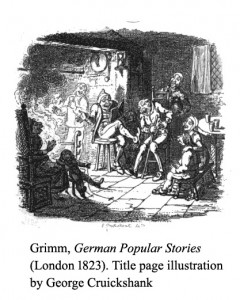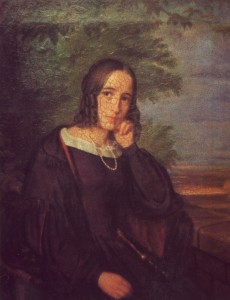Fairy Tales
 Fairy tales always had a place in my field of attention, but I only started to work on them after my geographical scope widened from the Netherlands to the whole of Europe. (See a separate page for my earlier work on `folklore’ in Dutch). In the Netherlands folklore collections contained too few fairy tale texts to be of much interest and a considerable number of them had to be viewed with some suspicion anyhow. Frisian fairy tales, especially, from the second half of the twentieth century, were often unique in content and had only been related by a “narrator” to a collector. They were thus hardly part of any tradition.
Fairy tales always had a place in my field of attention, but I only started to work on them after my geographical scope widened from the Netherlands to the whole of Europe. (See a separate page for my earlier work on `folklore’ in Dutch). In the Netherlands folklore collections contained too few fairy tale texts to be of much interest and a considerable number of them had to be viewed with some suspicion anyhow. Frisian fairy tales, especially, from the second half of the twentieth century, were often unique in content and had only been related by a “narrator” to a collector. They were thus hardly part of any tradition.
In my work on fairy tales, I have, in a sense, historicised them by considering them as texts, produced in specific situations. Fairy tales are anthropologised by taking into account the uneven relationship between narrator and collector.
The observation about Frisian fairy tales will have influenced my general outlook: in my opinion genuine fairy tales, the so-called “tales of magic” are either derived from printed texts, extremely popular in eighteenth-century Europe, or they are nineteenth-century compositions. The two possibilities are elaborated in the following case studies:
– `De gouden vogel’, `Het levenswater’ en de Walewein. Over de sprookjestheorie van Maartje Draak, Tijdschrift voor Nederlandse taal en letterkunde 124 (2008): 259-277.
– Der Zauberer und sein Schüler – Die Erzählung und ihr historischer Ursprung, in: Wolfgang Müller-Funk & Christa Agnes Tuczay (Hrsg.), Faszination des Okkulten. Diskurse zum Übersinnlichen. Tübingen, Francke Verlag (2008): 43-72.
– On the Origin of Hänsel und Gretel. An Exercise in the History of Fairy-Tales, Fabula 49 (2008): 30-46. (request copy)
– `Met bloed uwen naem van onder op dit perkament zetten’. Duivelsverhalen in de schriftelijke en mondelinge overlevering, Volkskunde 111 (2010): 19-39.
– “Zoals de grootmoeders het hun kleinkinderen vertelden”. Witterycks Volksvertelsels in context. Biekorf. West-Vlaams archief voor geschiedenis, archeologie, taal- en volkskunde 110 (september 2010): 257-281.
– Fairy Grandmothers: Images of Storytelling Evens in Nineteenth-Century Germany, RELIEF 4 (2010): 174-197.
– Metamorphosing Men and Transmogrified Texts. Some Thoughts on the Genealogy of Fairy Tales, Fabula 52 (2011): 280-296.
[this resulted in a very strange reaction by CSK; I will reply to that in due time]
– De bronnen van de gebroeders Grimm. Over de herkomst van toversprookjes, in: Theo Meder (red.), Van kikvors tot droomprins. De wording van het sprookje. Hilversum, Verloren (2013): 101-117.
Marie Hassenpflug, oil painting by unknown artist, ca. 1808.
one of the most significant informants of Jacob Grimm.
– Eenmalige verhalen in Vlaanderen. Over het classificeren van sprookjes. Volkskunde. Tijdschrift over de cultuur van het dagelijks leven 116 (2015): 29-52.
and entries in the Enzyklopädie des Märchens on ATU 550, 551, and 325:
– Vogel, Pferd und Königstochter, Enzyklopädie des Märchens 14.1 (2011) [2012]: 283-289.
– Wasser des Lebens, Enzyklopädie des Märchens 14.2 (2012): 509-514.
– Zauberer und Schüler, Enzyklopädie des Märchens 14.3 (2013): 1165-1168.
Books
The first three articles on this page are more or less previous versions of chapters in
– Tales of Magic, Tales in Print. The genealogy of fairy tales and the brothers Grimm. Manchester, Manchester University Press (2012).
This book explores the transitions between eighteenth-century printed fairy tales to nineteenth-century notations from `oral tradition’, with the work of the Brothers Grimm in an intermediary position. It deconstructs romantic trends in the historiography of fairy-tale scholarship. It also reveals the full extent of the contributions made by young educated women in the Grimm’s circles. They acted as important informants for them using their intimate knowledge of printed fairy tales in Italian, French, and German (including plays), discussing, amending them and generously assisting the Brother’s project with little public acknowledgements.
See also the only blog on this site.
Most of the newer articles will be included in a future Dutch book: Over sprookjes.
